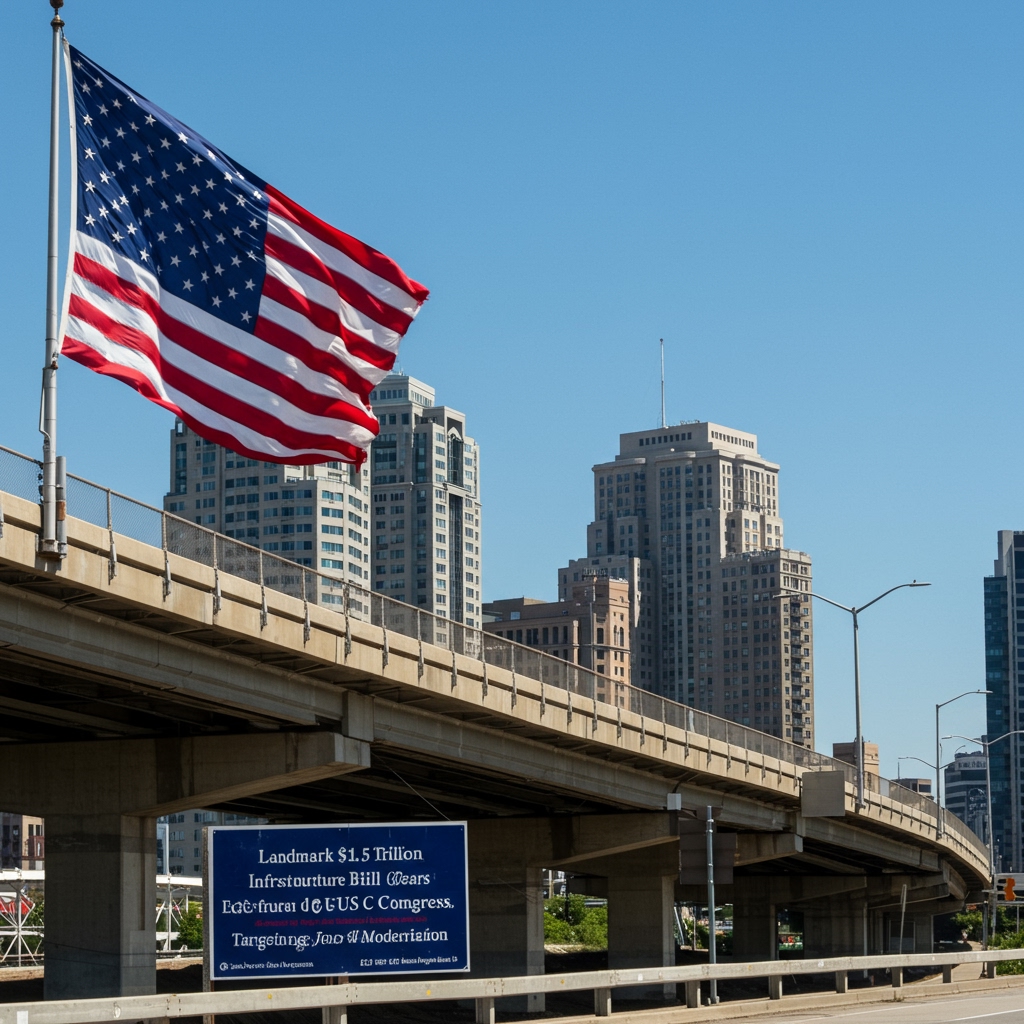US Congress Greenlights Sweeping $1.5 Trillion Infrastructure Package
Washington D.C. – The United States Congress has successfully navigated months of complex negotiations to approve a comprehensive and potentially transformative infrastructure bill, allocating a substantial $1.5 trillion towards vital national projects. This landmark legislation represents a critical milestone for the current administration and is poised to deliver significant investments across the country, aiming to modernize aging infrastructure, stimulate economic activity, and create jobs.
The passage followed intense debate and bipartisan engagement, ultimately securing approval from both the House of Representatives and the Senate. The bill’s scope is broad, targeting improvements in key areas including transportation networks, the expansion of broadband internet access, and significant investments in green energy initiatives. Proponents argue that this package is long overdue and essential for maintaining America’s competitiveness and quality of life in the 21st century.
Key Pillars of Investment
The $1.5 trillion allocated under this bill is earmarked for a diverse array of projects designed to touch nearly every facet of American infrastructure. A major focus lies in upgrading and repairing the nation’s transportation networks. This includes substantial funding for roads, bridges, public transit systems, railways, airports, and ports. Experts have long pointed to the deteriorating condition of these systems as a drag on economic efficiency and a safety concern. The new funding aims to address this backlog of maintenance and invest in future transportation technologies.
Beyond traditional transit, a significant portion of the investment is directed towards broadband expansion. The COVID-19 pandemic underscored the critical need for reliable and affordable high-speed internet access across the nation, particularly in rural and underserved urban areas. This legislation seeks to bridge the digital divide, enabling better access to education, healthcare, and economic opportunities for millions of Americans who currently lack adequate connectivity.
Furthermore, the bill places a strong emphasis on green energy initiatives. This component includes funding for upgrading the electric grid to support renewable energy sources, investments in clean energy technology development, and projects aimed at increasing energy efficiency and resilience. These investments are seen not only as crucial for combating climate change but also for positioning the United States as a leader in the clean energy economy of the future.
Economic Impact and Job Creation
A central argument made by supporters of the bill is its projected positive impact on the national economy. The legislation is expected to stimulate robust economic growth by injecting massive federal spending into state and local projects across all 50 states. This influx of capital is anticipated to create millions of jobs over the next decade, spanning various sectors including construction, engineering, manufacturing, and technology. These jobs are often well-paying and are expected to provide opportunities for a diverse workforce.
The scale of investment is intended to serve as a powerful economic stimulus, helping to recover from recent economic challenges and lay a foundation for sustained prosperity. Infrastructure spending is often cited by economists as having a high multiplier effect, meaning every dollar invested generates significantly more than a dollar in overall economic activity as wages are earned, spent, and reinvested in the economy.
The Political Journey and Bipartisan Cooperation
The path to passage for this $1.5 trillion bill was marked by intense negotiation and political maneuvering. Initial proposals faced significant hurdles and required substantial compromise from lawmakers on both sides of the aisle. The fact that the measure ultimately achieved significant bipartisan cooperation in both the House of Representatives and the Senate is noteworthy, especially in the current political climate. This bipartisan support was crucial in overcoming legislative obstacles and demonstrating a shared commitment to addressing the nation’s infrastructure needs.
Debates centered on the overall cost, the specific allocation of funds, and the mechanisms for project selection and oversight. However, the perceived urgency of modernizing infrastructure, coupled with the potential for job creation and economic benefit, ultimately provided the common ground needed to forge a legislative agreement.
A Cornerstone Priority Achieved
For the current administration, the passage of this infrastructure bill represents the fulfillment of a cornerstone priority. Investing in infrastructure was a key promise and a central element of the administration’s agenda to ‘Build Back Better’. The successful navigation of the legislative process to enact this large-scale investment is a significant political achievement that is expected to have lasting implications for the country’s physical and economic landscape.
While the bill’s passage is a major step, the focus now shifts to implementation. The effective and efficient allocation of $1.5 trillion across countless projects nationwide will require careful planning, coordination between federal, state, and local authorities, and vigilant oversight to ensure funds are used effectively and transparently. The coming years will reveal the full impact of this historic investment on America’s infrastructure, economy, and future.





